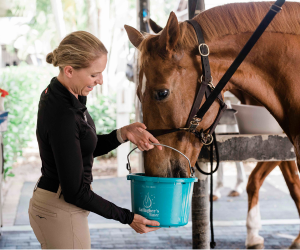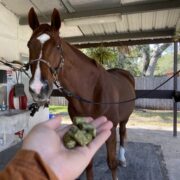Enough With The Positive vs. Negative Reinforcement
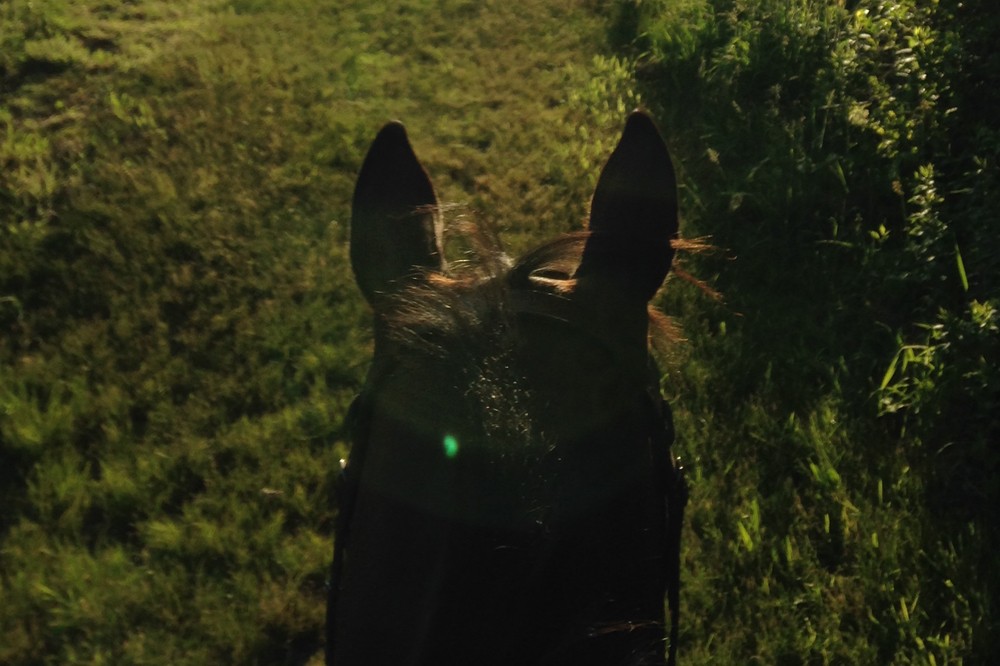
Looking back, I guess I grew up practicing both positive and negative reinforcement training. I enjoyed teaching my dogs and cats different tricks with treats, and riding my horses around off leg pressure, but I was too young to think much about the actual science of learning behaviors.
My initial introduction to the science behind positive reinforcement training was through the marine animal shows I saw frequently at the Mystic Aquarium in Connecticut. All of the tricks the seals and sea lions did with their handlers were rewarded with fish in the same way that I rewarded my dog and cat with treats after they successfully responded to the “Sit” verbal cue. But there was no training at those shows that reflected the way I communicated with my horses with small pressure and releases.
It wasn’t until my late teenage years that I realized the difference in the way I trained animals at home versus the way I trained my horses at the barn.
I didn’t use food-based rewards with my horses. Sure, I would give them a few treats after a good ride, but there were no treats given throughout the training process. In fact, I was often told that I gave too many treats, that I should stop hand-feeding my horses because it would make them pushy and rude. Now, I never listened to those people (and I still give my horses treats from my hands) and it has never made my horses disrespectful of my personal space. However, in comparison to those marine animal shows, I still hardly gave any rewards at all – or so I thought.
Today, there is too much of a divide between positive (R+) and negative (R-) reinforcement training techniques. During a time when the social license of equestrian sport is under so much scrutiny, we need to stand together to explain how the vast majority of us work with our horses kindly and respectfully. In order to do that we need to be focused on pushing for better animal welfare across the board, being vocal about our stand against abuse, not attacking a horseman for where they fall on the positive vs. negative reinforcement training spectrum.
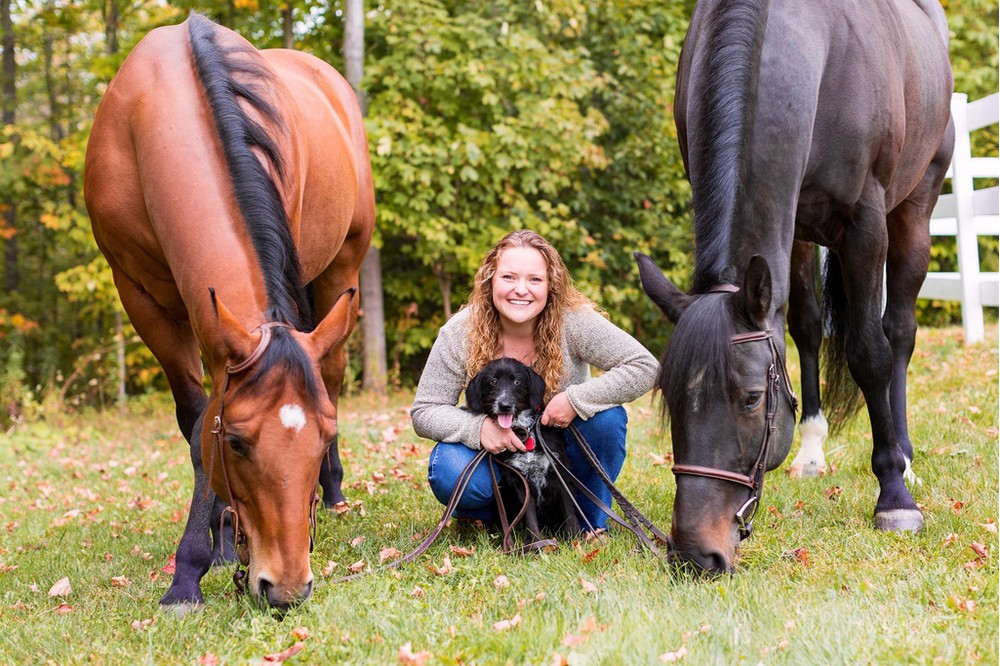
Not all negative reinforcement is negative. The scientific label takes away our openness to talk about our training practices because “negative reinforcement” has developed a negative connotation in our industry. And there is too much focus on the actual treat-giving process in positive reinforcement training. Ultimately, I don’t believe that you need to actually give a food-based reward to be practicing positive reinforcement training, and I don’t believe you should be afraid of saying you practice negative reinforcement training just because of its name.
In my experience, I have found that horses find comfort and peace in the stillness and the calm energies of their handlers. So, to address what some R+ trainers preach online: yes, pressure and release training is, by definition, a negative reinforcement because the reward is taking away the pressure; however, that reward is no less important or valuable to a horse than a treat, and not all pressure is aversive or unpleasant. In my opinion, pressure can and should be used as a cue in training horses because the release of that pressure, and the reward of returning to stillness is a powerful reward for a horse.
Can marine animal trainers use pressure and release models? Probably not. I assume it would be a lot more difficult for a sea lion to understand and respond to someone pressing into their side to ask them to move over than it is for a horse, because horses are domesticated animals in a way that even marine animals in captivity are not. However, both marine animals and horses use pressure and release models when communicating with each other, so why would we not use methods that make sense to them already?
Let’s think about two horses in a pasture where there is one pile of hay. Just like in our own social groups as humans there is a hierarchy of who is going to get to go eat some hay first and that hierarchy is determined through pressure. If the two horses don’t have a set hierarchy yet, how are they going to establish it? They are going to see who will give in to the others’ pressure first. One horse might spin, scream, and back toward the other in warning. If the other does not want to back away from that pressure and settle into the lower position in the hierarchy, they might also turn around and back toward the other horse. There would be kicks and squeals, but eventually the horses would establish who is the leader and the leader will be the one who decides who gets to eat first.
Now, some R+ trainers want us to believe that by establishing ourselves as the leaders and for horses to respect our space (with groundwork and pressure through a lead or the aid of a flag), we are not creating true partnership with that horse. We are making them subservient, not our equal partner. I completely disagree with this; let me use the same example of the two horses establishing leadership over hay to explain why. One of the two horses has established themselves as the leader, but they still want to be around each other and are connected. If I were to remove the leader from that pasture, the other horse would still cry out and want to follow. Leadership in a herd is not taking away from the bonds of the herd mates; it’s creating respect for each horses’ position in the hierarchy. Horses use negative reinforcement with each other, so using that type of training should not put someone in a category as a mean or cruel trainer. Applying gentle pressure and releasing it when the horse responds is good training.
Now, R- trainers might see that think, “exactly just train your horses, enough with all the treats,” and that is not the mindset any person in the equine industry should have. We should always be striving to learn new ways to communicate with our horses and denying that R+ training works and is successful in creating solid horse citizens is completely counterproductive. Positive reinforcement training invites a horse to learn in a way that is super helpful and creates a very open and welcoming place for horses to try new things with the encouragement of food-based rewards.
Let’s be real here for a moment, who would deny trying to do something for a tasty treat (or even much-needed money) in return? In the same way my mother would encourage me to clean my room by explaining I could get a chocolate bar when I was finished, a horse is going to want to try for a morsel of a yummy snack, they like tasty things just as much as we do! Discouraging or dismissing positive reinforcement training solely for the reward-giving process is a disappointing trend of trainers in the industry. There is absolutely no harm in giving a horse a piece of a carrot to reward them for picking up their foot so you can pick it.
Instead of discrediting the incredible things R+ trainers have and continue to accomplish with horses just because they give treats when they are teaching things, we should all consider how this type of learning might be helpful to our own horses. Because, like negative reinforcement, horses use positive reinforcement when communicating with each other as well.
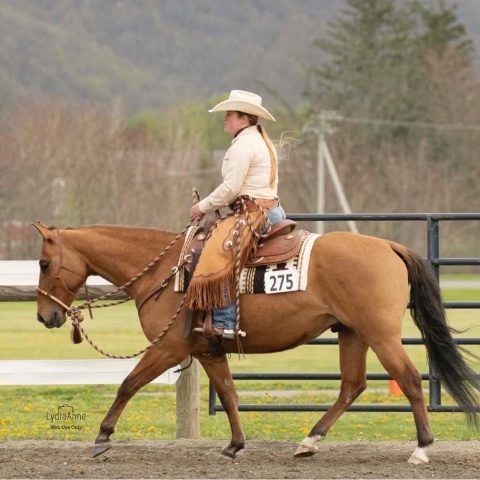
Think about two horses grooming each other. When one horse has found that itchy spot the other horse tries a heck of a lot harder to find and scratch their partner’s itchy spot in return. They are positively rewarding their herd mate for the good grooming by making sure their scratch needs are met too! In the same way, (without the food-based reward), I know plenty of R- trainers who ask their horse to lift a foot for the farrier and then reward their horse by a good scratch on their wither while the farrier moves to the next hoof. That is R+ training too!
The reward does not have to be food. Positive reinforcement training is giving something as a reward when the behavior is correct, which means that whether you give a treat, a scratch on the withers, or a whisper of “good boy,” you are positively reinforcing the action, and that is good training.
I think the majority of equestrians use a combination of both positive and negative reinforcement training and that should be celebrated not seen as being noncommittal by both sides of the training spectrum. R- trainers need to stop harping on R+ trainers for feeding treats and R+ trainers need to stop arguing that all forms of pressure applied by R- trainers are cruel. If our community is going to stand together against abuse and advocate for improved horse welfare, we need to be united.
We all want the same thing. We love horses and we want to enjoy our time with them, and we want our horses to enjoy their time with us too. So enough with the sides of operant conditioning. Let’s communicate about the things we have in common and about our different ideas with each other openly. Let’s be honest with each other and talk about the things that aren’t working and ask questions. Let’s be good to our horses and to our fellow equestrians so we can create the safe and strong community that our horses need to fight for them.

